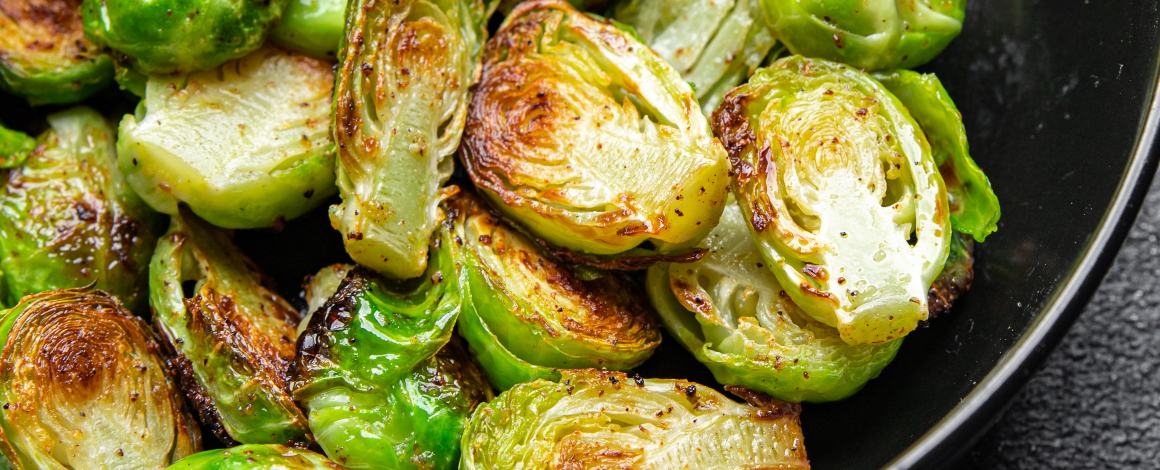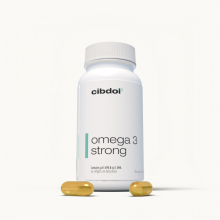What Vegetables Are High in Omega-3?
Published:
Omega-3 fatty acids provide wide-ranging health benefits, from supporting heart and brain health to reducing inflammation. While fish and supplements dominate discussions of omega-3 intake, many vegetables also contain decent amounts, especially of the plant-based ALA form. This article explores the top omega-3 vegetables to add to your diet.
Contents:

Overview of Omega-3 Fatty Acids
Omega-3 fatty acids are a type of essential polyunsaturated fat necessary for human health. The main types are:
- ALA (Alpha-Linolenic Acid): Found mainly in plant foods and can convert in the body to active EPA and DHA
- EPA (Eicosapentaenoic Acid): Improves heart health markers and triglycerides
- DHA (Docosahexaenoic Acid): Critical for brain function and development
ALA is considered an essential fat, meaning we must get it from food. Our bodies can convert it to EPA and DHA omega-3s but only at low rates around 5-10%. Still, consuming ALA rich foods provides benefits.
Experts recommend minimum 500 mg per day of combined EPA and DHA for adults, with optimal intakes around 2000 mg. However, most people fall short of getting enough omega-3s.
While fatty fish provide EPA and DHA directly, certain vegetables can contribute meaningful amounts of ALA to help meet needs.
Top Vegetables Highest in Omega-3 ALA
All vegetables contain just trace omega-3 amounts. The best sources are green leafy vegetables, as well as beans, lentils, nuts, and seeds.
Here are the vegetables with the most sizable ALA omega-3 content:
1. Brussels Sprouts
One cup of cooked Brussels sprouts offers 494 mg of ALA omega-3. That’s half the daily recommended amount from one vegetable!
Brussels sprouts also provide vitamin K, vitamin C, kaempferol, fiber, and other antioxidants.
Roast or sauté Brussels sprouts to bring out their sweetness. Shred them raw into salads. They make a nutritious side dish.
2. Spinach
A 100 gram serving (about 1⁄2 cup) of boiled spinach has 145 mg of ALA omega-3, along with vitamins A, C, K, and folate.
Spinach reduces oxidative stress, supports eye and bone health, and protects the immune system.
Use spinach in omelets, pastas, soups, smoothies, and salads for an omega-3 and nutrient boost.
3. Broccoli
One cup of chopped, boiled broccoli florets contains 104 mg of ALA omega-3.
Broccoli provides vitamins C and K, chromium, fiber, sulforaphane, and other protective phytochemicals.
Enjoy broccoli steamed, roasted, in stir fries, soups, or casseroles. Its versatile flavor pairs well with seasonings.
4. Soybeans
A 100 gram serving (about 1⁄2 cup) of boiled soybeans has 551 mg of ALA omega-3.
Soybeans also supply protein, copper, manganese, phosphorus, B vitamins, and isoflavones that support heart health.
Use soybeans in salads, stir fries, stews, soups and other dishes. Choose organic edamame for an easy snack.
5. Kidney Beans
Kidney beans contain 406 mg of ALA omega-3 per 100 gram serving, along with protein, fiber, folate, iron, and minerals.
The deep red kidney bean gets its color from protective anthocyanin antioxidants.
Kidney beans work well in chili, tacos, rice dishes, soups and veggie burgers.
6. Navy Beans
Navy beans provide 237 mg of ALA omega-3 per 100 gram serving, as well as plentiful protein, fiber, folate and iron.
These versatile beans are perfect for soups, stews, pasta dishes, tacos, hummus, and homemade baked beans.
7. Peanuts
A 100 gram serving of roasted peanuts contains 37 mg of ALA omega-3, along with plant protein, biotin, copper, vitamin E, resveratrol and phytosterols.
Peanuts support heart health when eaten in moderation as part of an overall healthy diet. Use chopped peanuts as a crunchy topping for stir fries, salads and curries.
8. Almonds
Almonds offer 32 mg of ALA omega-3 per 100 gram serving, plus protein, magnesium, calcium, vitamin E, iron, fiber and beneficial phytochemicals.
Add sliced almonds to oatmeal, yogurt, baked goods, salads and stir fries, or enjoy as a snack in moderation due to their high calorie density.
Other Vegetables with Modest Omega-3 ALA
While not the highest sources, these other common vegetables contain small amounts of omega-3 ALA:
- Carrots: 12 mg per 100g
- Sweet potato: 10 mg per 100g
- Mushrooms: 9 mg per 100g
- Asparagus: 4 mg per 100g
- Onions: 1 mg per 100g
Eating a diverse mix of vegetables helps contribute little amounts that add up. Certain herbs like basil, sage, and cilantro also provide trace omega-3s.
Ways to Add More Omega-3 Vegetables
Here are easy strategies to eat more omega-3-rich vegetables every day:
- Toss Brussels sprouts, kidney beans and spinach into salads, soups and stir fries.
- Roast broccoli, asparagus and carrots with olive oil and spices.
- Add peanuts or almonds to stir fries, oatmeal and yogurt for crunch.
- Blend spinach and navy beans into dips, spreads and smoothies.
- Prepare vegetable curries using spinach, broccoli, peppers and legumes.
- Grill portobello mushrooms and vegetables like zucchini and eggplant.
- Make veggie chili with kidney beans, soybeans, onions and sweet potato.
- Snack on raw carrots, celery, peppers and edamame with hummus.
Mixing vegetables of different colors and textures ensures a wide range of nutrients and antioxidants.
Omega-3 ALA Content of Vegetables (Per 100g)
Here is how some popular vegetables compare for total omega-3 ALA content:
| Vegetable | Omega-3 ALA (mg) |
|---|---|
| Brussels sprouts | 494 |
| Soybeans | 551 |
| Kidney beans | 406 |
| Spinach | 145 |
| Broccoli | 104 |
| Navy beans | 237 |
| Carrots | 12 |
| Mushrooms | 9 |
| Sweet potato | 10 |
Prioritize leafy greens, beans, lentils, nuts and seeds for the highest omega-3 amounts from plant sources.
Should You Take an Omega-3 Supplement?
While vegetables provide ALA, the best sources of anti-inflammatory EPA and DHA omega-3s remain fatty fish, fish oil, krill oil and algal oil.
If your diet lacks sufficient omega-3 rich fish, taking a quality third-party tested supplement can ensure you meet recommended daily intake levels for full benefits.
When shopping for supplements, look for reputable brands listing specific EPA/DHA amounts, and avoid rancid fishy products.
Key Takeaways on Vegetables High in Omega-3
- Brussels sprouts offer a substantial 494 mg omega-3 ALA per cooked cup.
- Beans, spinach, broccoli and soybeans also provide over 100 mg per serving.
- Peanuts and almonds contain omega-3 ALA in addition to other nutrients.
- Roast, sauté, blend, or enjoy omega-3 vegetables raw with dips.
- If diet lacks fatty fish, an algal oil or fish oil supplement can provide anti-inflammatory EPA/DHA directly.
- Eat a diverse mix of vegetables, with emphasis on Brussels sprouts, beans, nuts and seeds.
Focusing on omega-3-rich vegetables while also eating fatty fish or taking a quality supplement leads to optimal intake of these essential fatty acids vital for health.










